
The history of the Little Italy neighbourhood in Toronto
Little Italy was Toronto's first designated Italian neighborhood. It surrounds College Street, bordered roughly by Bathurst, Dundas and Harbord streets and Ossington Avenue.
The area gets its name for its large number of Italian residents and institutions, although this wasn’t the first place Italian immigrants settled.
Toronto saw a surge in Italian immigrants in the late 19th and early 20th centuries.
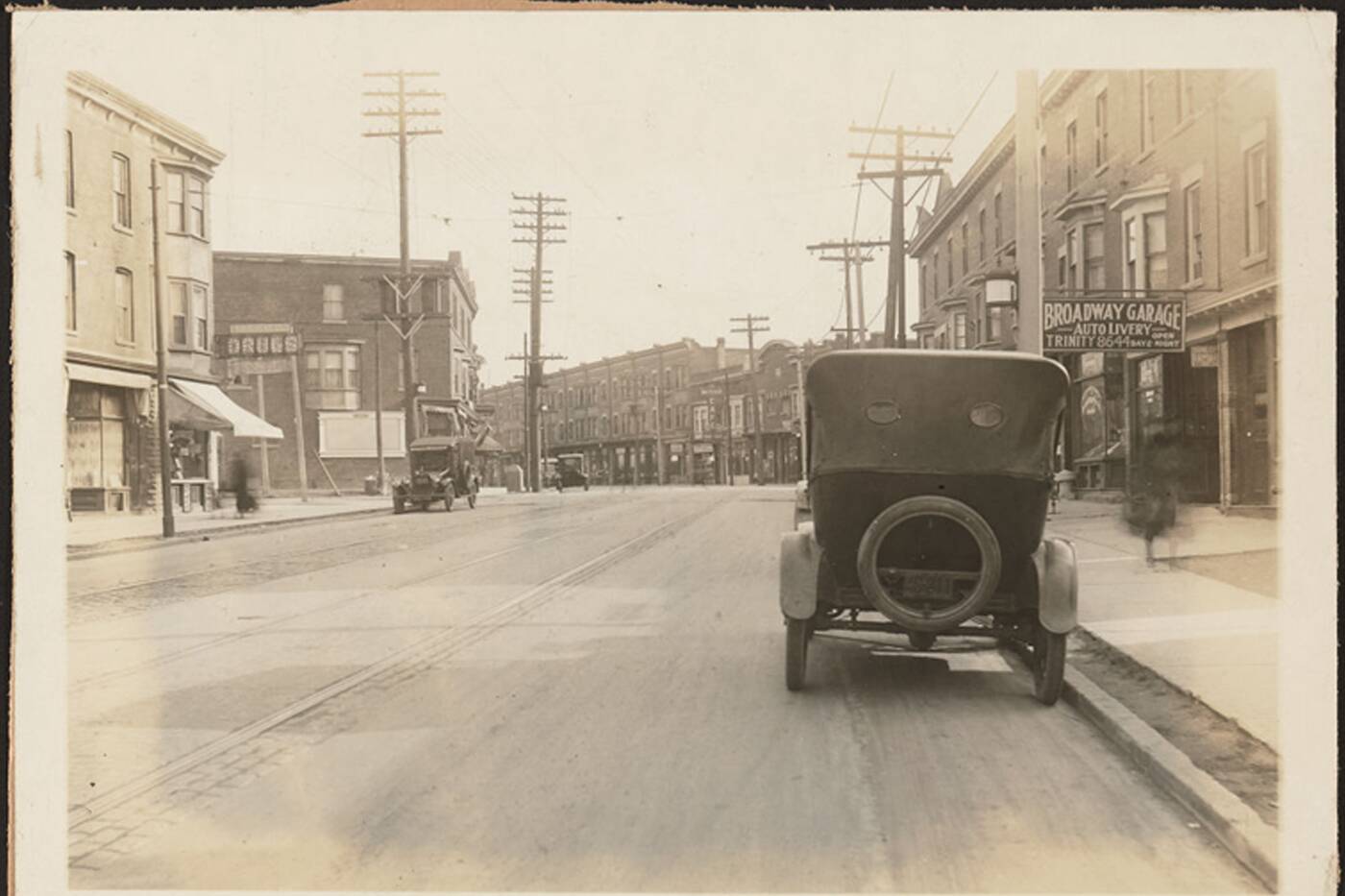
The north-east corner of College and Grace streets, the view is looking east on College Street in the 1920s. Photo via Toronto Archives.
Millions of Italians left Italy between 1896 and 1915, many of which were coming to Canada, specifically Toronto.
Like other poor newcomers, they settled in a cramped neighborhood called The Ward. Bounded by Queen, College, Yonge and University, some still refer to it as Toronto's original Little Italy.
In the 1920s the Italians began moving out of The Ward, west along Bathurst, which was the beginning of Little Italy as we know it today.
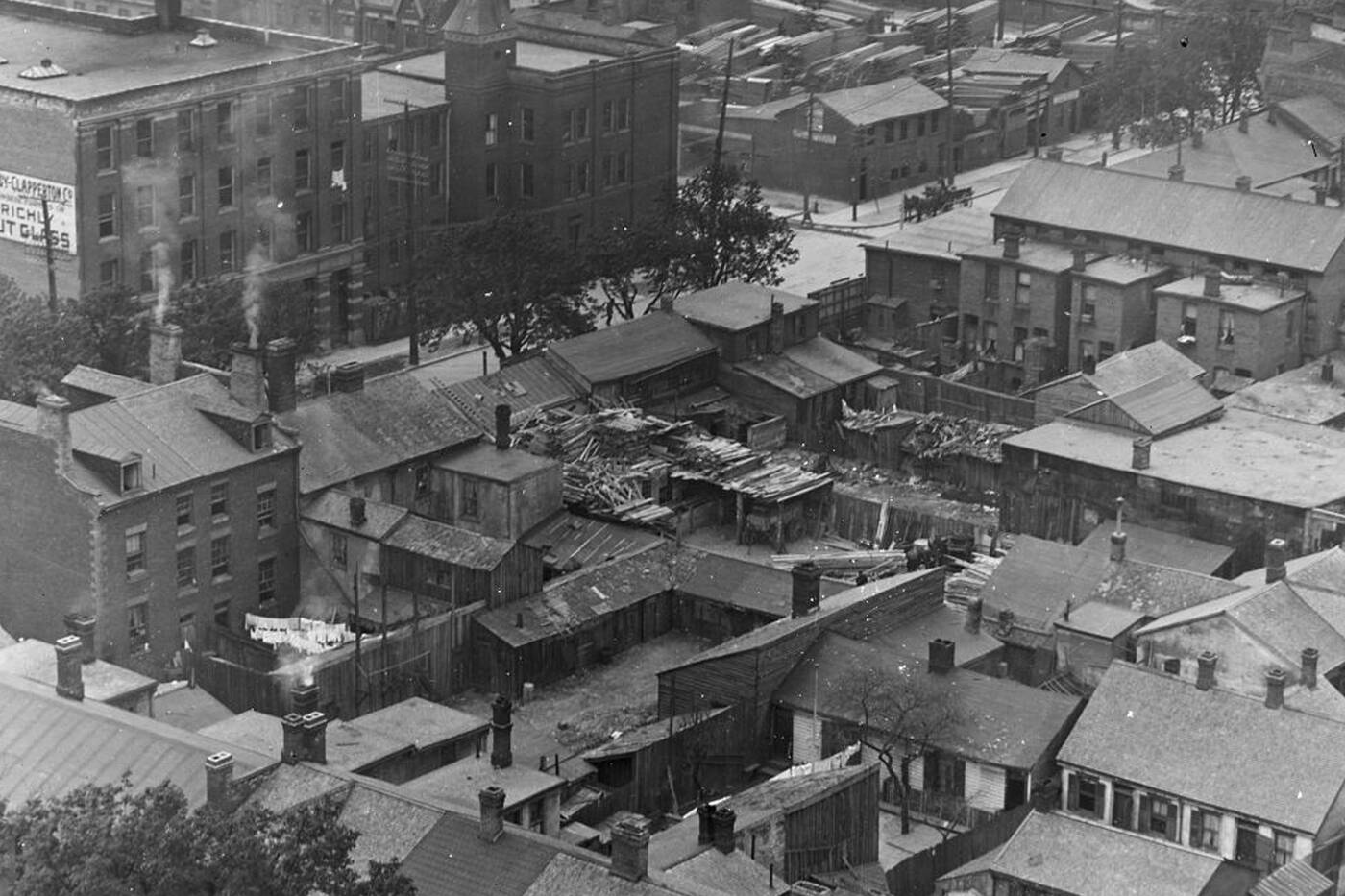
The Ward neighbourhood in Toronto in 1910. Photo by Toronto Archives.
This was when the Italian-Canadian identity really began forming, and the neighborhood became recognized as Toronto’s residential and commercial Italian hub.
According to the Canadian Museum of Immigration at Pier 21, the padrone system, a network of Italian labour brokers, recruited Italians to come work for North American employers, which was in part why so many Italians ended up in Toronto.
However, the system was extremely corrupt with the use of deceptive tactics and inflated fees.
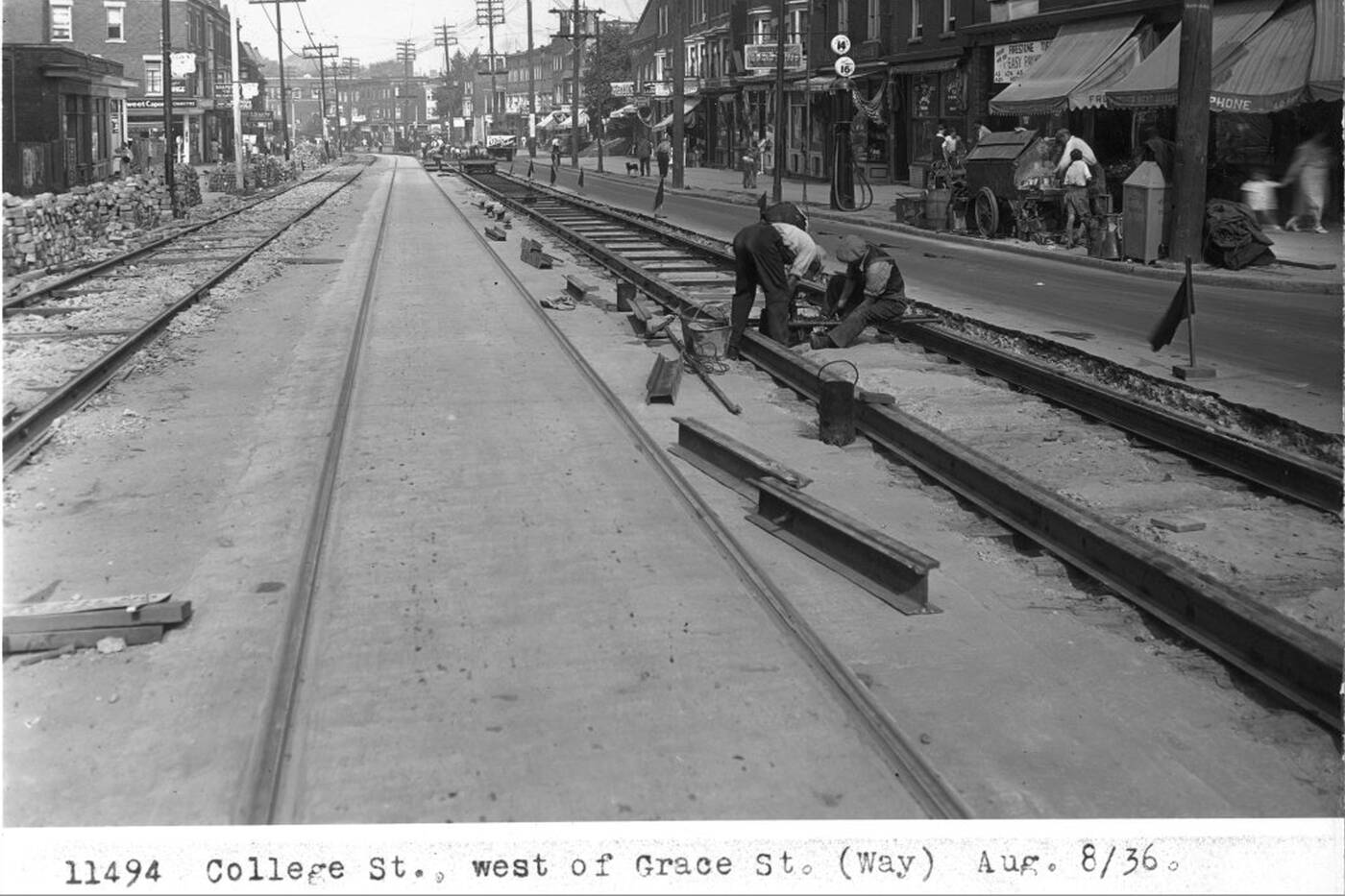
Workers putting tracks down on College Street west of Grace Street on Aug. 8, 1936. Photo via Toronto Archives.
This also meant that a large portion of Italians coming to Toronto during the twentieth century were unskilled labourers, from the economically depressed regions of southern Italy.
They played a huge role in the industrialization of the city, working in construction and on the railways.
The residential homes were mostly built in the early 1900s, Markham Street and Euclid Avenue featuring a Victorian style, while Palmerston is lined with rows of iron street lamps. This architecture was preserved to today and is a vital part of the neighbourhood’s character.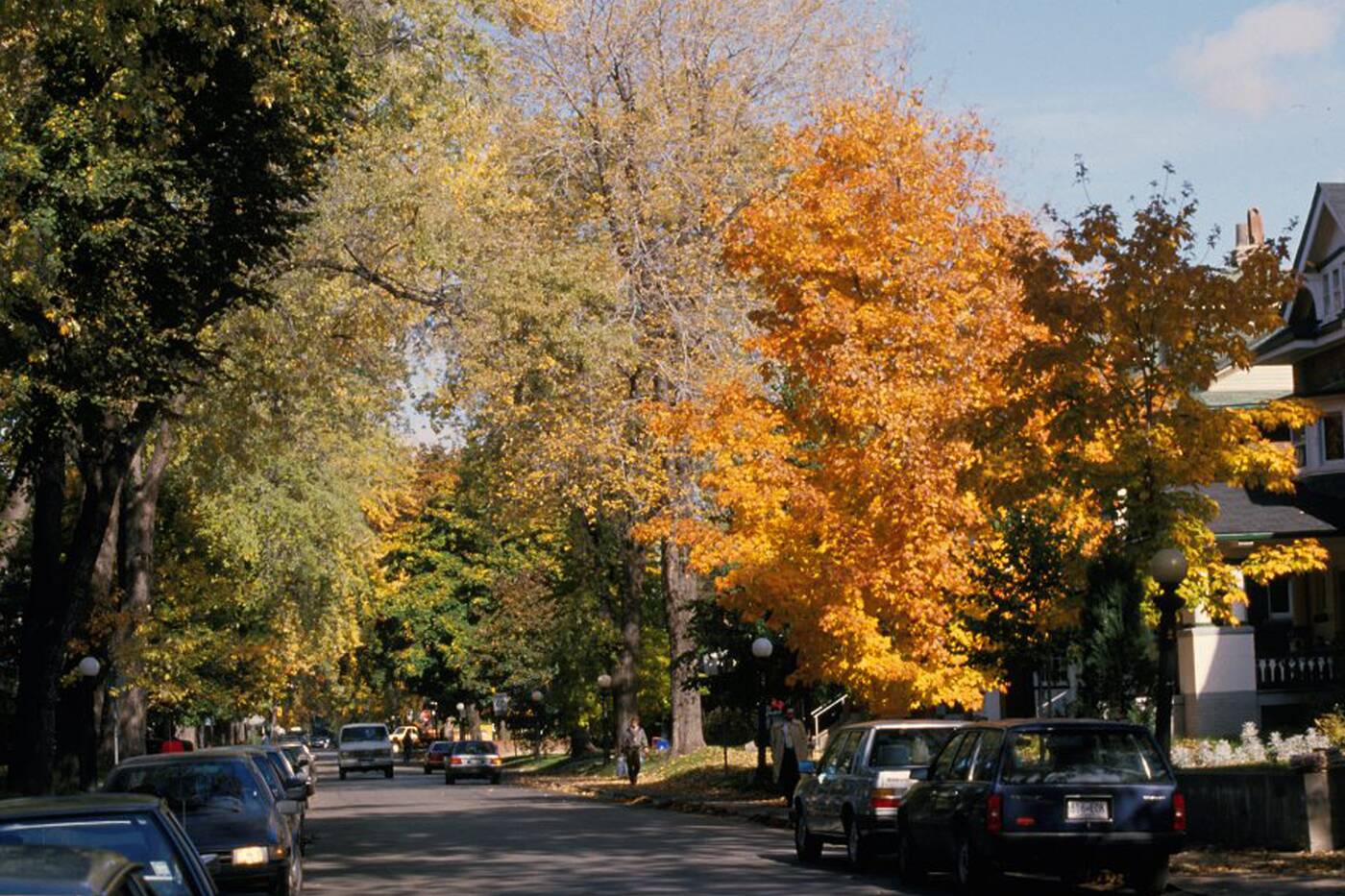
Palmerston Boulevard lined with lampposts in the 1980s. Photo via Toronto Archives.
Lampposts aren’t the only thing Little Italy is known for preserving. The neighborhood began hosting one of the city's largest Good Friday Processions in the mid-1900s.
It didn’t start off that big though, it was originally a small affair done by St. Agnes Parish, nearby today's St. Francis of Assisi Church.
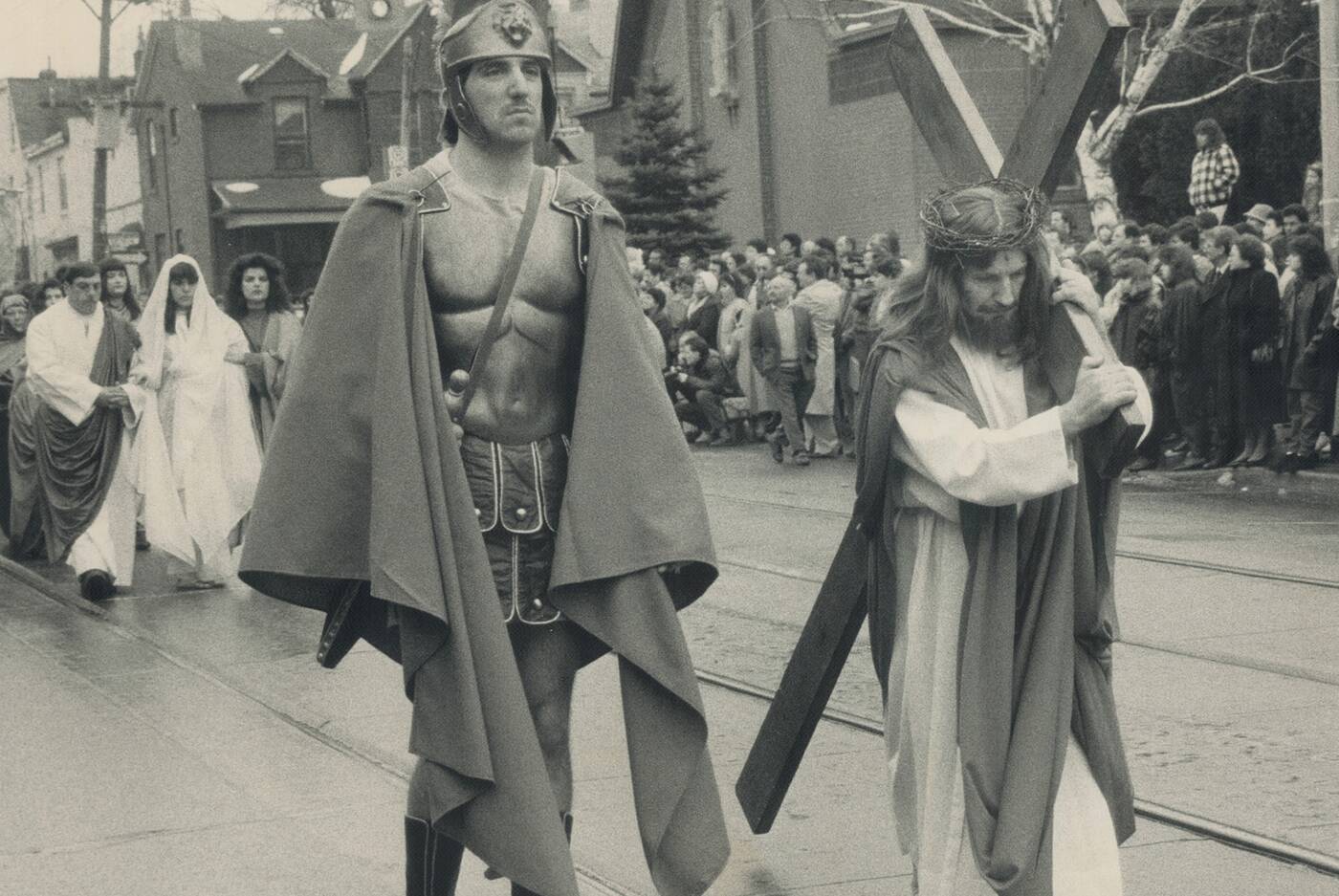
Little Italy's Good Friday Procession in 1989. Photo via Toronto Public Library.
Over the decades it has grown to attract nearly 100,000 people from all over. Now College Street gets shut down annually to make room for floats, bands and thousands of participants.

Little Italy's Good Friday Procession on April 18, 2014. Photo by Bruce Reeve.
Another one of Little Italy's biggest contributions to the city was the establishment of the first multicultural/multilingual radio station in Ontario, CHIN AM 1540.
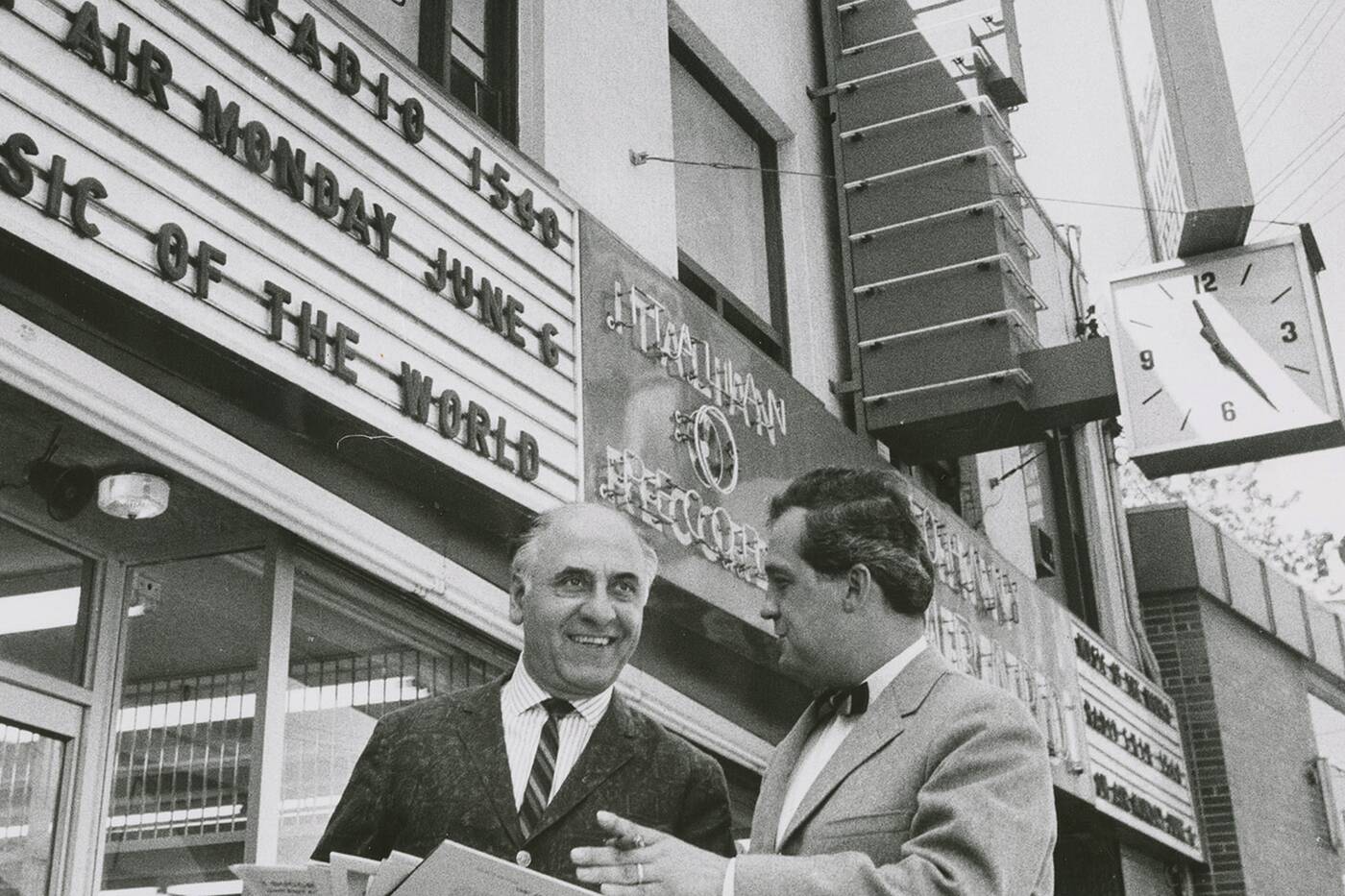
Johnny Lombardi outside of CHIN Radio Station in 1966. Photo via Toronto Public Library.
Born in 1915 and raised in a tenement house in The Ward, Johnny Lombardi was known for producing Italian radio programs and events in the late 1900s.
Lombardi founded CHIN in 1966 with the station’s first broadcast on June 6, 1966, followed by CHIN FM 100.7's a year later in 1967.
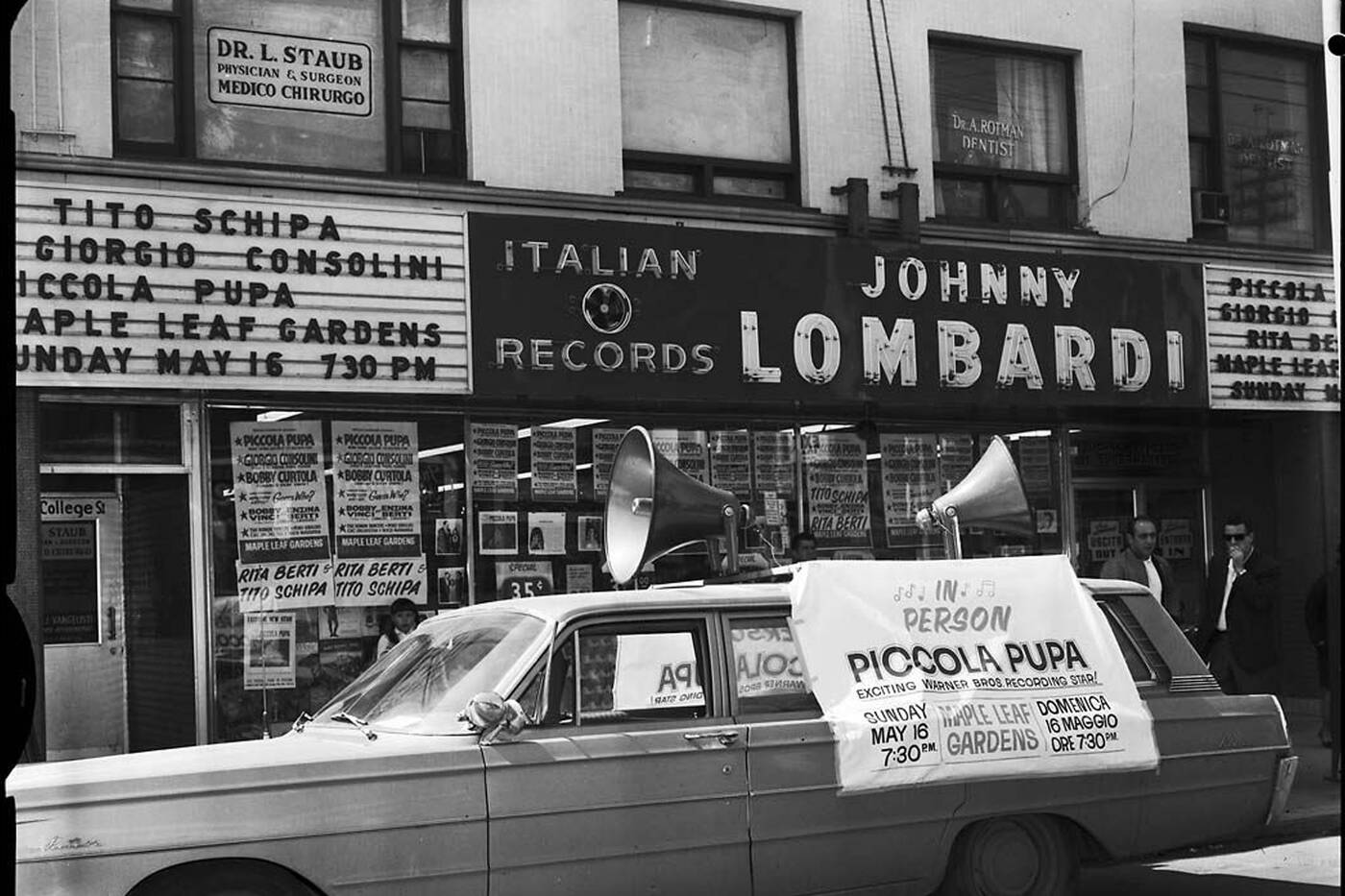
Outside of Johnny Lombardi Records in 1965. Photo via Toronto Archives.
A major change came to the neighborhood "after World War II, when hundreds of Italian residents—suddenly less stigmatized by Canadian society—began moving to other parts of the GTA, initially to St. Clair Avenue West, then to the outer suburbs of Woodbridge, Vaughan, and Mississauga," according to the U of T study Ethnic Packaging and Gentrification.
In the 1960s, many of these Italian residents were more secure with their life in Canada, especially financially. Although Little Italy drew them in as a place to find work and settle alongside people of their culture, it no longer held the same appeal as it used to.
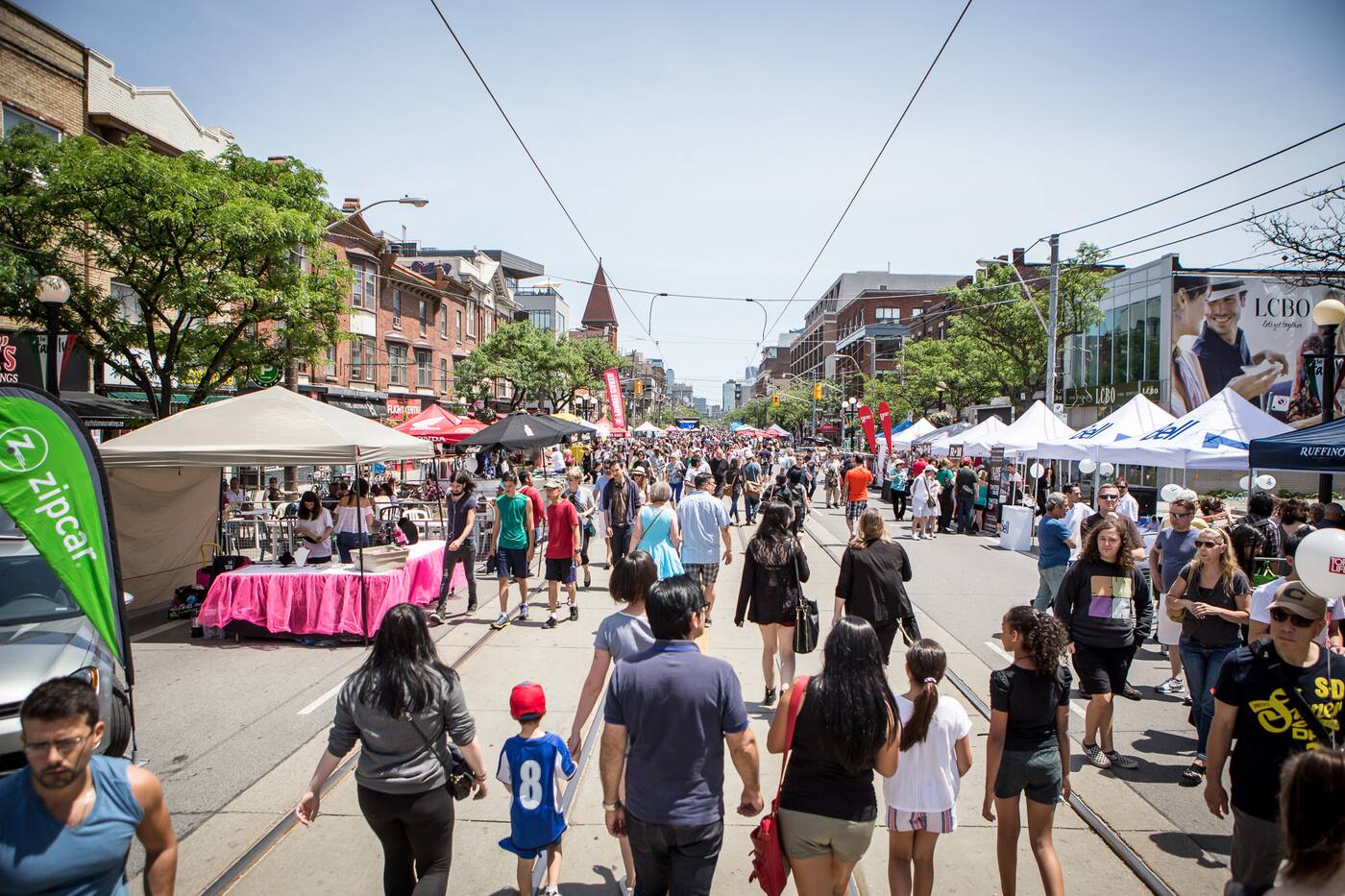
The Taste of Little Italy continues to be a crowd pleaser. Photo by Jesse Milns.
With so many people leaving, the neighborhood began seeing a big change in its demographic, with an influx of Portuguese, Chinese and Vietnamese residents. To this day, the neighborhood is known for its multicultural community, a melting pot of cultures and traditions.
In 1985, the Little Italy Business Improvement Area (BIA) was founded in the heart of College Street. The BIA runs 10 blocks along College Street, bounded by Bathurst and Shaw streets. The area is filled with restaurants, cafes, bars and local shops.
It is also the place where the annual Taste of Little Italy is celebrated. It's known for an abundance of classic Italian food, wine and performances.
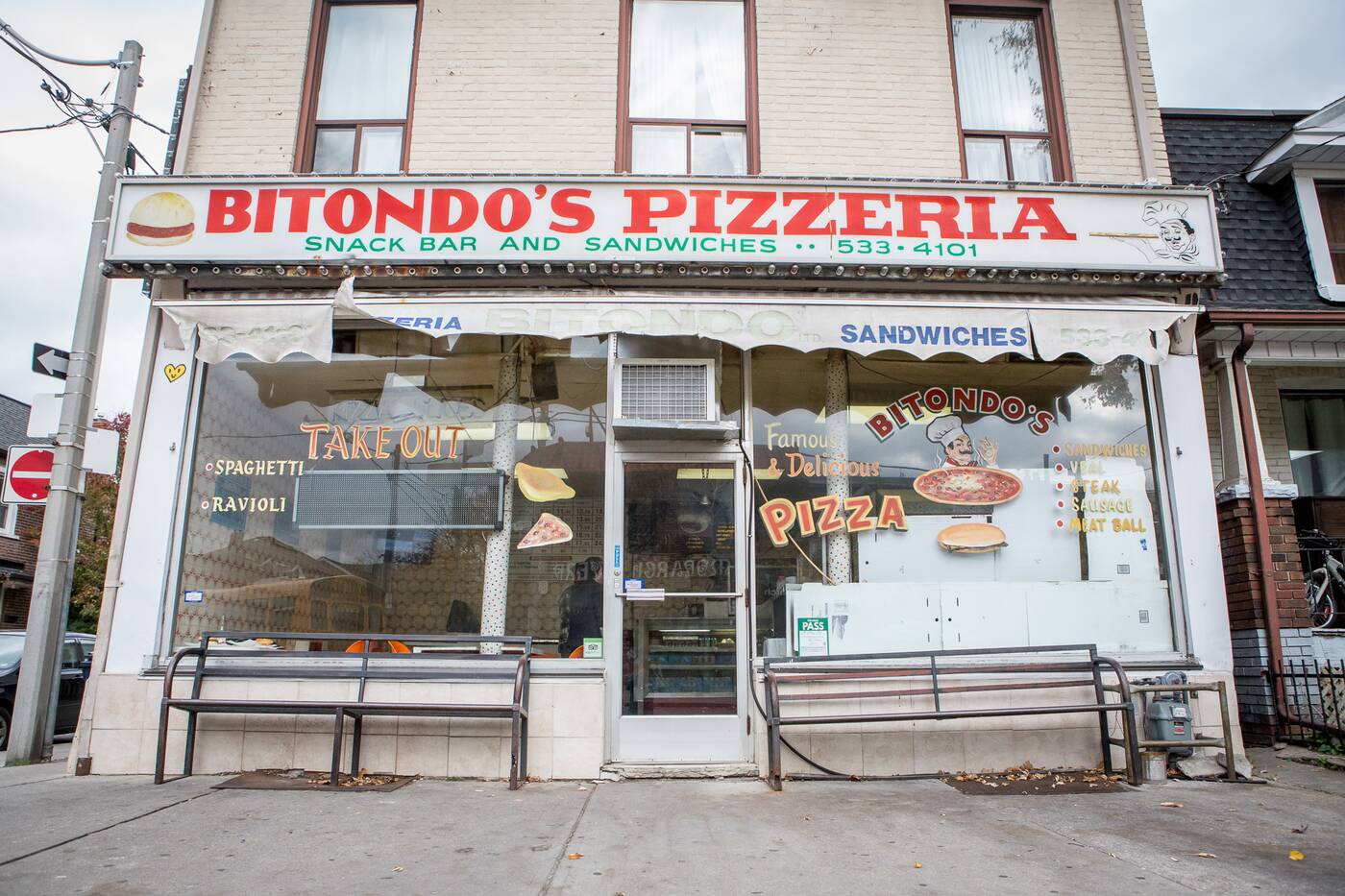
Bitondo Pizzeria is still a great place for a slice. Photo by Jesse Milns.
The festival isn't the only time to taste some delicious food, Little Italy is sprawling with more restaurants than you can count. Bitondo Pizzeria has been a neighborhood staple since the 70s and the go-to spot for a pizza slice or panzerotti.
Another Little Italy classic is Cafe Diplomatico, or "The Dip," which has been a neighbourhood favourite for over 50 years. It started as a cafe and coffee roaster, a place where Italians gathered over coffee, biscotti and gelato.
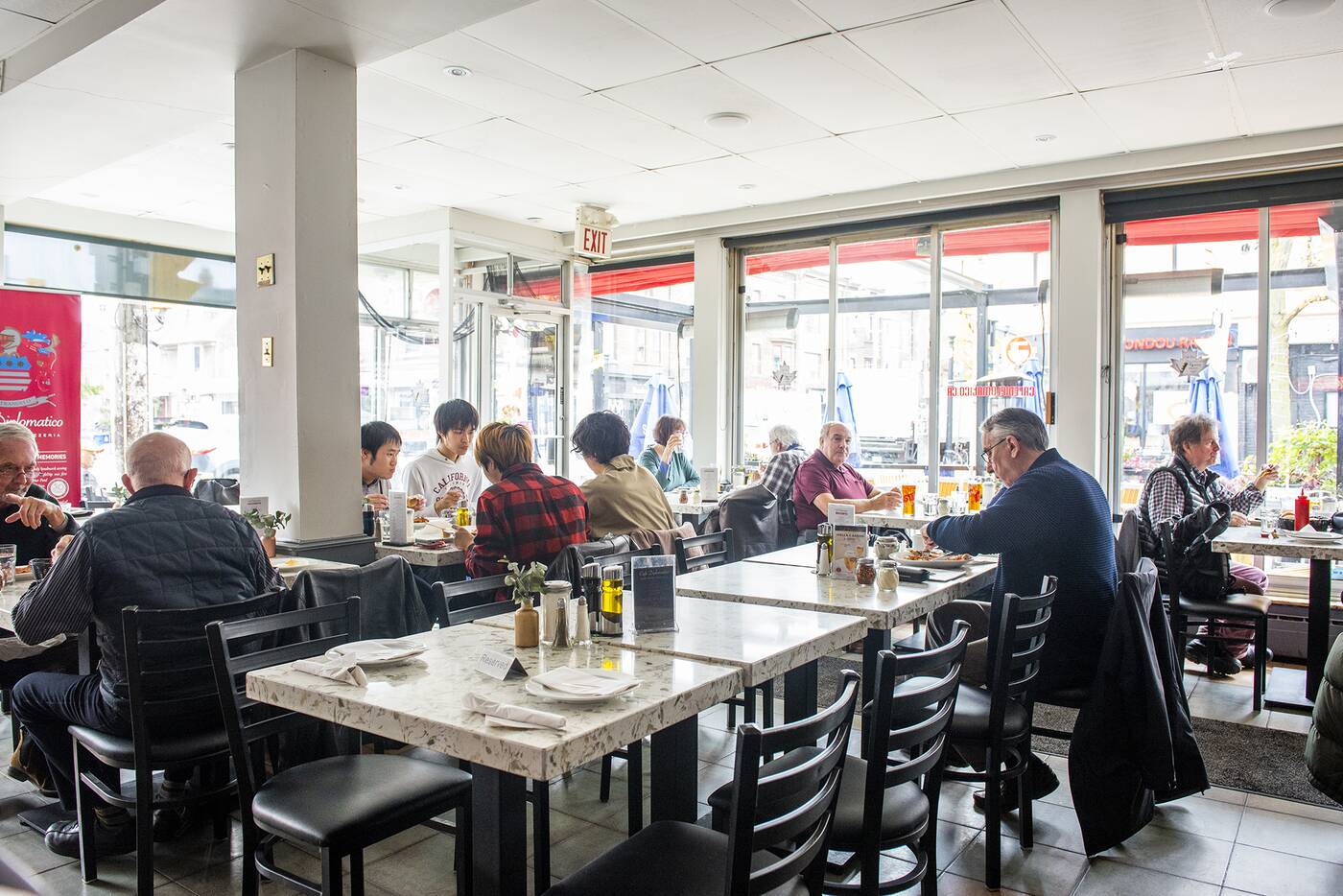
Cafe Diplomatico is a neighbourhood fixture at College and Clinton. Photo by Hector Vasquez.
Their website boasts that their patio was busy at a time when outdoor dining was unheard of in Toronto. Its popularity only grew and The Dip now offers a full restaurant, bar and patio, including a mega screen. Some call it the best spot for cheering on your favourite soccer team.
Food is not the only thing drawing attention to this neighborhood, Little Italy became the star of the show in 2018 when a Canadian-American romantic comedy by the same name was filmed there. People were torn on liking the movie, but it sure received a lot of attention.
Although Little Italy isn't nearly as Italian as it used to be, the neighbourhood and its name continue to pay tribute to the major impact that the early Italian community had on it.
Latest Videos
Latest Videos
Join the conversation Load comments







